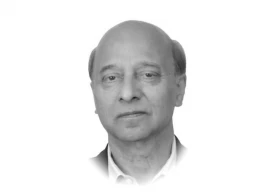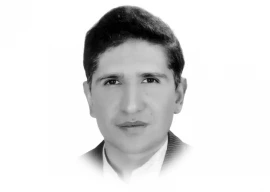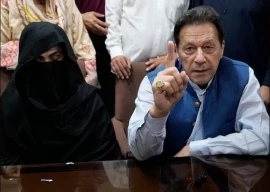
Operation Zarb-e-Azb was launched by the military after the civilian federal government’s efforts to hold meaningful talks with the Pakistani Taliban made no headway. When the terrorists attacked Karachi airport in 2014, the military top command decided to launch the operation in North Waziristan on its own. The civilian government did not have any choice but to go along with it. This operation dislodged the Taliban and their allies from North Waziristan. A good number of them succeeded in slipping out to Afghanistan, other tribal areas and mainland Pakistan. The Pakistani Taliban based in Afghanistan were beyond the direct reach of our security agencies. Some operations were launched in other tribal areas to nab them, and while these groups were weakened, they were not totally eliminated.
The Pakistani Taliban and their allies who came to mainland Pakistan had no problems in hiding as they had already established their networks, supporters and sympathisers. Here, the Pakistan Army could not deal with them in the same way it did through the operation carried out in North Waziristan. In cities and towns, it was up to the civilian federal and provincial governments and their bureaucratic and law-enforcement structures to track down and contain these elements. These governments faltered in many respects, giving these elements time and space to revive themselves.
The NISP was a comprehensive document for controlling extremism and terrorism. It had clear objectives and a detailed organisational and institutional framework to cope with these challenges. However, no concrete steps were taken to implement it, and its key points and objectives remained dormant. Had this policy been fully implemented, there would have been no need of announcing the NAP. Out of the NAP’s 20 points, one point relates exclusively to the army (military courts), five points relate partly to the armed forces and partly to the civilian government, and 14 points relate exclusively to the civilian political and administrative system. The performance of the NAP has been uneven but better than the NISP because the military is pushing the civilian governments on the implementation of the former through the Apex Committees at the provincial level as well as through the periodic meetings of the military top brass and the senior federal minsters under the chairmanship of the prime minister. These new informal structures have greatly devalued the institutions of federal and provincial cabinets.
Despite pressure from the military, the implementation of the civilian side of the NAP has been slow, inconsistent and marked more by rhetoric than action. If the military relents the pressure for one reason or another, the fate of the NAP will not be different from that of the NISP. There are two sets of problems in the handling of the NAP. First, the mindset of the civilian leadership is divided over who is resorting to terrorism and how it should be dealt with. Divergent interpretations are given as to who the real culprit is. Are they Pakistan-based groups; are they funded by foreign governments; or is it Pakistan’s pro-US policies that is fuelling them? The disposition towards the Kashmir-focused groups reflects a lot more ambiguity on the part of the civilian and military leadership.
Second, the PML-N and other right-of-centre parties and religio-political groups face a dilemma. All these parties draw support from that section of the population that demonstrates sympathy for militancy and the view that Western powers are out to undermine the Muslim countries, especially Pakistan. Therefore, political considerations and the imperatives of electoral politics impede the PML-N, the PTI and the religious parties from pursuing a tough policy towards local religious hardliners, sectarian and militant groups. They all condemn terrorism. However, they avoid condemning specific groups and instead talk about external conspiracies or Pakistan’s pro-US policies as the main causes of terrorism. These political considerations impede the civilian power elite from fully implementing the NAP. Some action is being taken, but it is not being pushed to its logical end. Examine the handling of the issues of hate speech and literature, banned organisations, the funding to these groups, madrassa reforms and the state narrative to counter the discourse of militancy and terrorist groups. Nacta continues to be marginal to the controlling of terrorism. The interior ministry calls the shots in this respect.
The NAP must be implemented in all respects. The state discourse must emphasise the centrality and primacy of Pakistan as a nation-state with precedence over all societal organisations. The principles of constitutionalism, participatory governance, the rule of law and socioeconomic justice must become the hallmark of governance and political management. A credible worldview based on religio-cultural pluralism, tolerance and equal citizenship rights need to be disseminated among the people by all political parties, parliamentarians and local governments. They should warn people against the groups that use religion to justify hatred and violence. The intelligence and law-enforcement agencies need to track down extremist and violent groups in all provinces, especially in Punjab, which is home to major sectarian and other jihadi groups. Pakistan’s civilian and military authorities can no longer adopt a selective approach or pursue inconsistent policies to cope with internal threats to societal harmony, political stability and economic resilience. The failure to control these threats makes us vulnerable to external penetration and adversely affects our role at the global level.
Published in The Express Tribune, January 25th, 2016.
Like Opinion & Editorial on Facebook, follow @ETOpEd on Twitter to receive all updates on all our daily pieces.
1737192425-0/Untitled-design-(18)1737192425-0-405x300.webp)
1737194485-0/fizza-(14)1737194485-0-165x106.webp)
1737191559-0/Untitled-design-(17)1737191559-0-165x106.webp)
1737189589-0/Untitled-design-(16)1737189589-0-165x106.webp)
1737189007-0/Untitled-design-(13)1737189007-0-165x106.webp)








1732012115-0/Untitled-design-(14)1732012115-0-270x192.webp)





COMMENTS (2)
Comments are moderated and generally will be posted if they are on-topic and not abusive.
For more information, please see our Comments FAQ